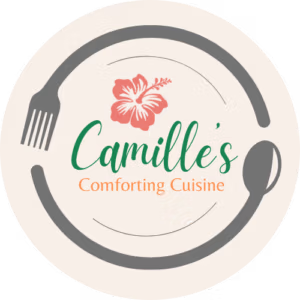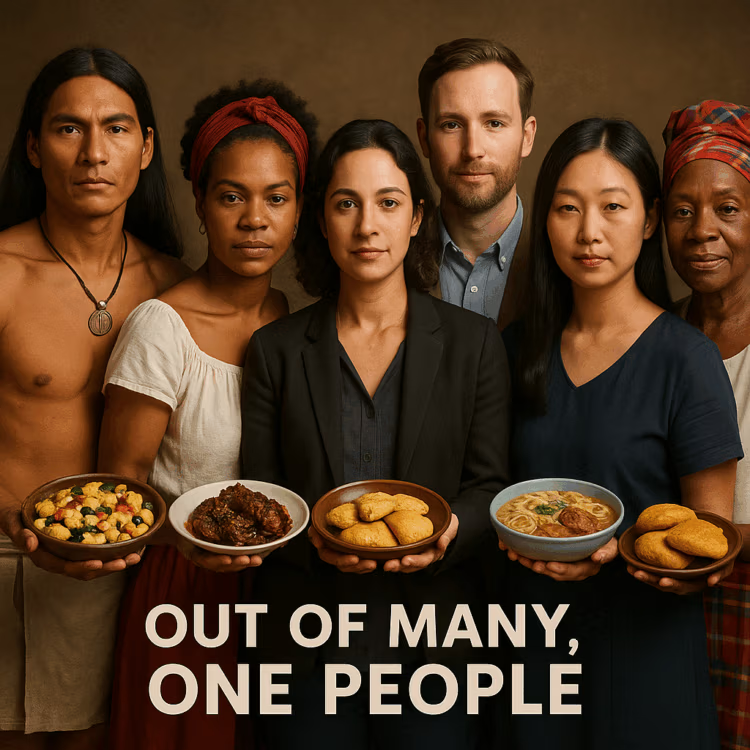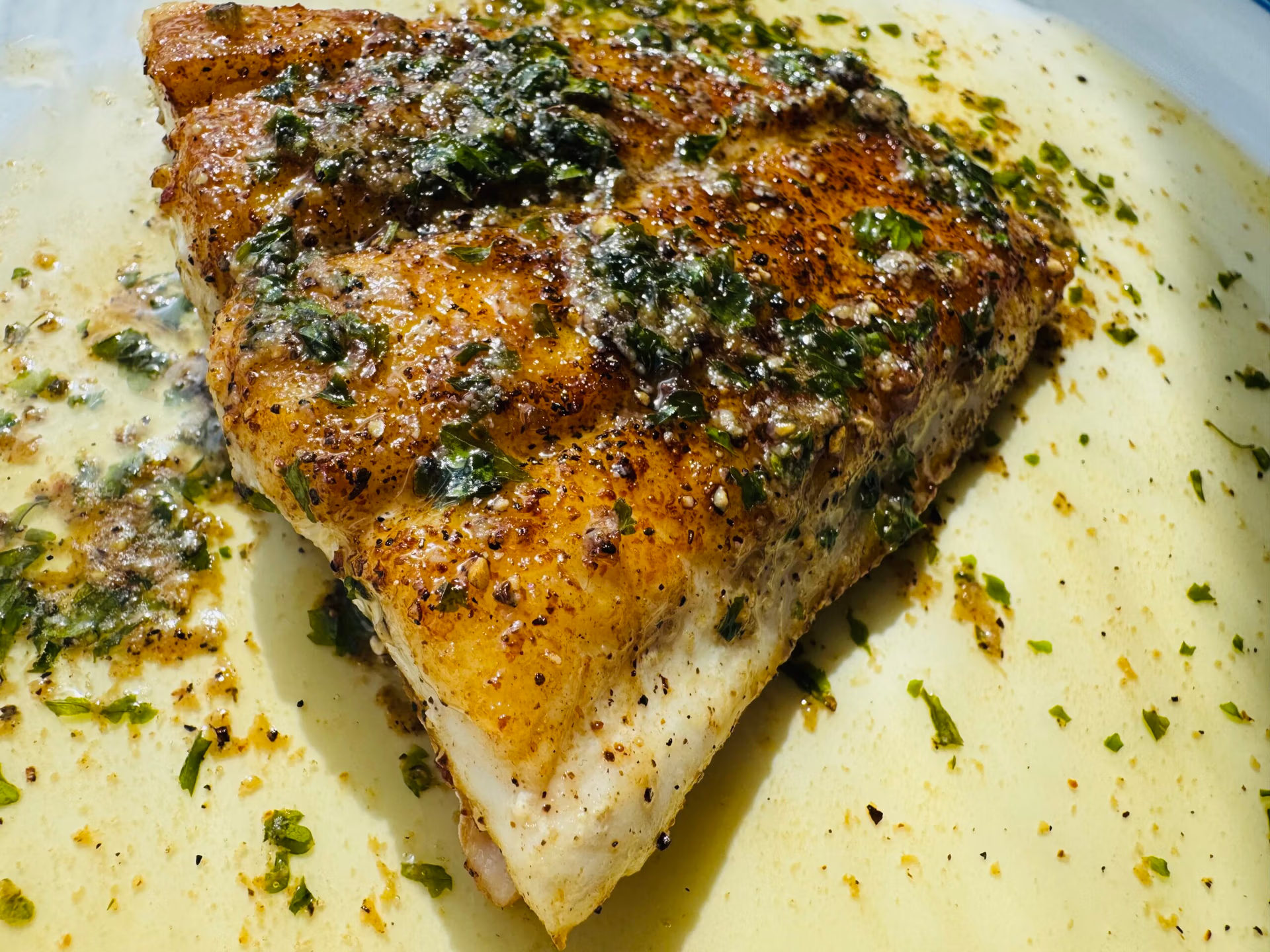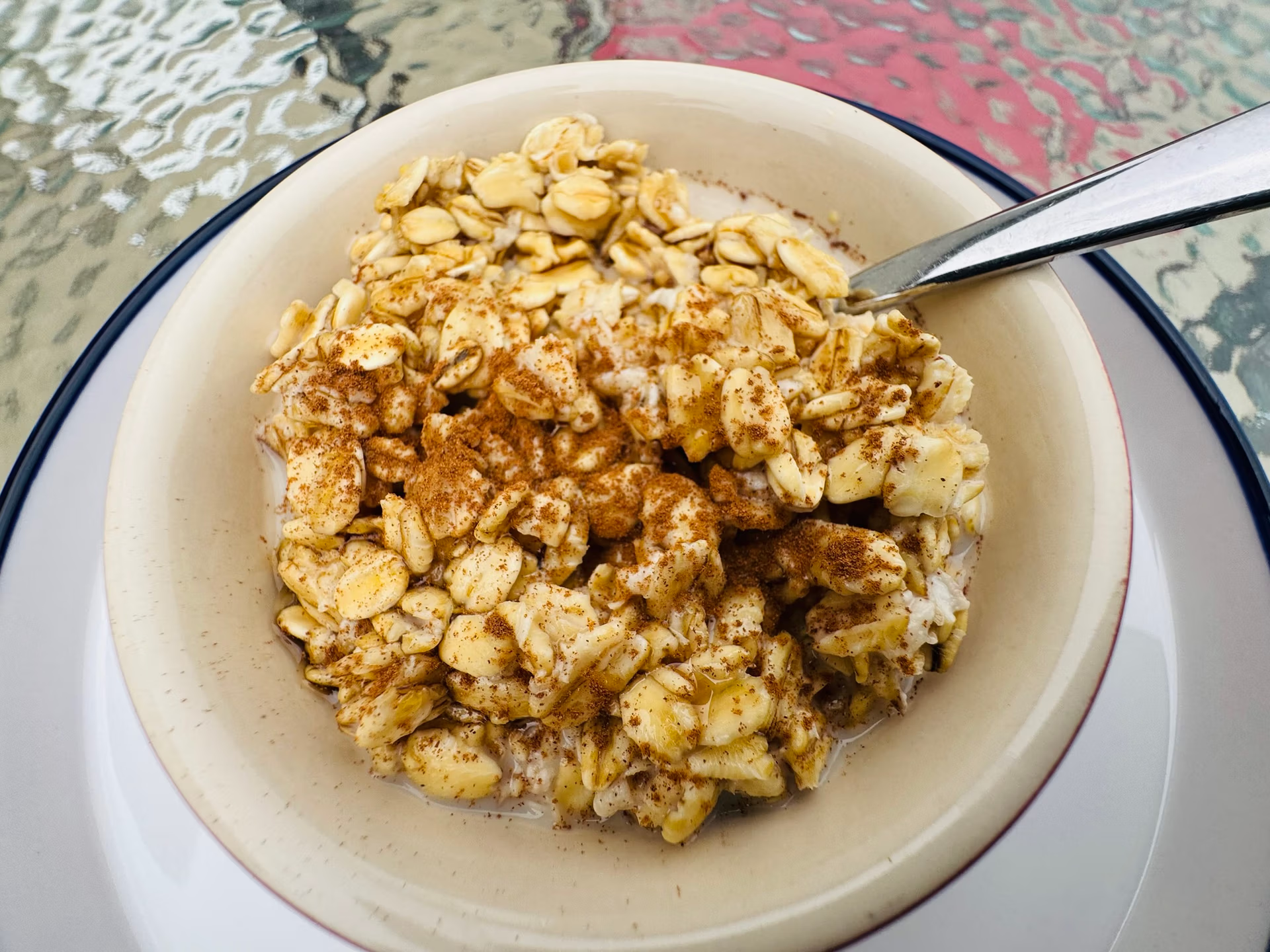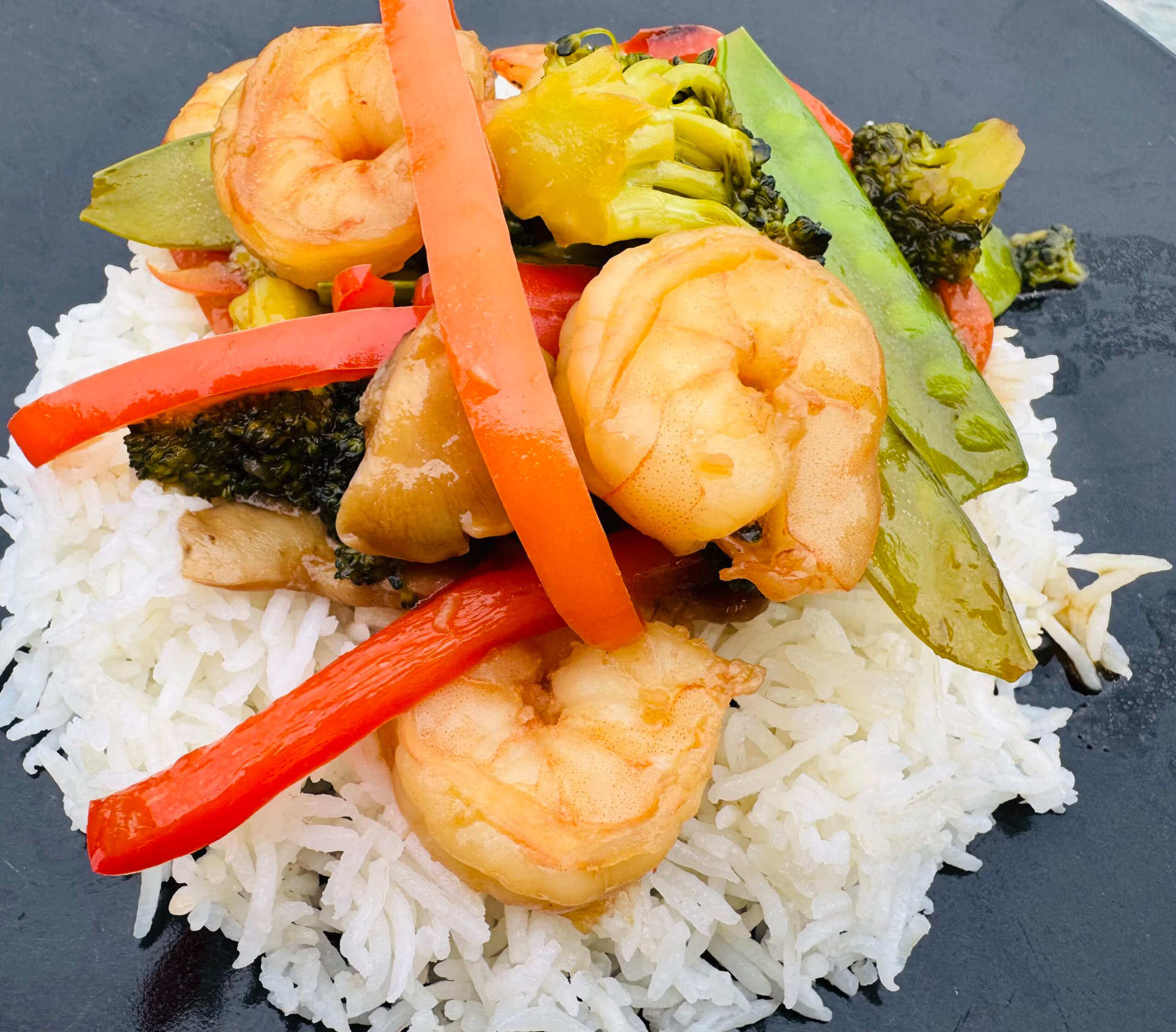“I didn’t know how deep it ran.”
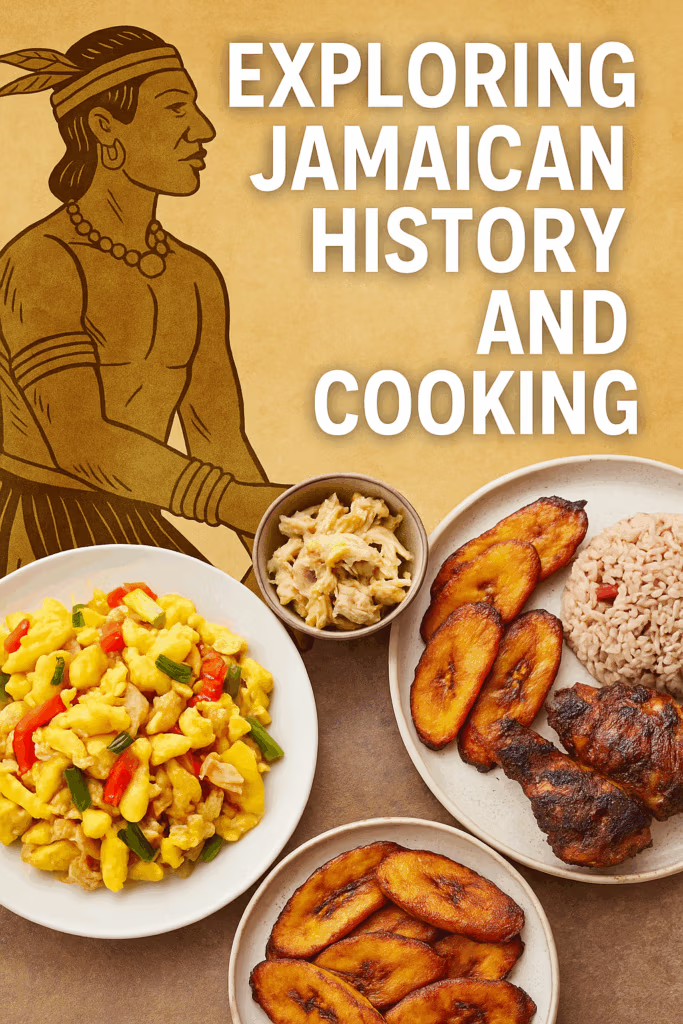
Learning about Jamaican history and cooking, that’s what I kept saying to myself after I got my 23andMe results. I expected a little surprise here or there, but what I didn’t expect was how much it would shift how I looked at the food I grew up eating, the food I love cooking, and the food I’m now passing on to my daughter. Our motto in Jamaica is “Out of Many, One People,” but what I didn’t fully grasp until that moment is that it’s not just about people. It’s about flavors, too. And in my case, it’s about the legacy of runaway slaves, escape from the Spanish Inquisition, British colonization, Cuban soul, African rhythm, and Indigenous wisdom—all finding their way to the plate.
This post is my love letter to that legacy. A deep dive into Jamaican history, cooking traditions, and how it all found a home in my Indiana kitchen.
From the Tainos to My Table: The Indigenous Heart of Jamaican Food
Long before jerk chicken hit the grills and reggae shook the speakers, the Taino people were already cooking. They roasted over pimento wood, smoked meats for preservation, and introduced us to cassava, maize, and peppers. That pepper pot soup? That came from them. Bammy? Taino. And though history books tried to erase them, their flavors remain in every bite we take. (Try my recipe for Fried Bammy here)
Want to see what I mean? Check out this YouTube breakdown on Taino food influences, or dive deeper with the Smithsonian’s Caribbean Indigenous Legacies Project.
Spanish and Portuguese Influence in Jamaican Food History
My mom’s side of the family is Jamaican, but with Portuguese and Sephardic Jewish roots. Her ancestors fled persecution and settled in Jamaica for freedom and safety. It’s wild to think that so many flavors we think of as just Jamaican actually carry pieces of Europe with them. Escovitch fish? That’s escabeche. Gizzadas, those little coconut tarts we love? Also rooted in Portuguese sweets.
My grandmother used to make them without even realizing she was passing on centuries of history. You can read more about Jamaica’s rich colonial and multicultural heritage through the National Library of Jamaica.
My Dad, the Cuban Brit, and Our Caribbean Fusion Kitchen
My dad’s background is a wild ride—British by nationality, but of African and Cuban descent. That meant tea time and plantains were both equally likely in our house. He brought the Cuban flair—bold flavors, fried plantains, and layered stews. My curried beef patties? Inspired by both sides of my roots.
Jamaican food history isn’t just about a timeline—it’s about families like mine where rice and peas meets ropa vieja and dumplings meet mashed potatoes.
Jamaican Cooking from Africa to the Maroons
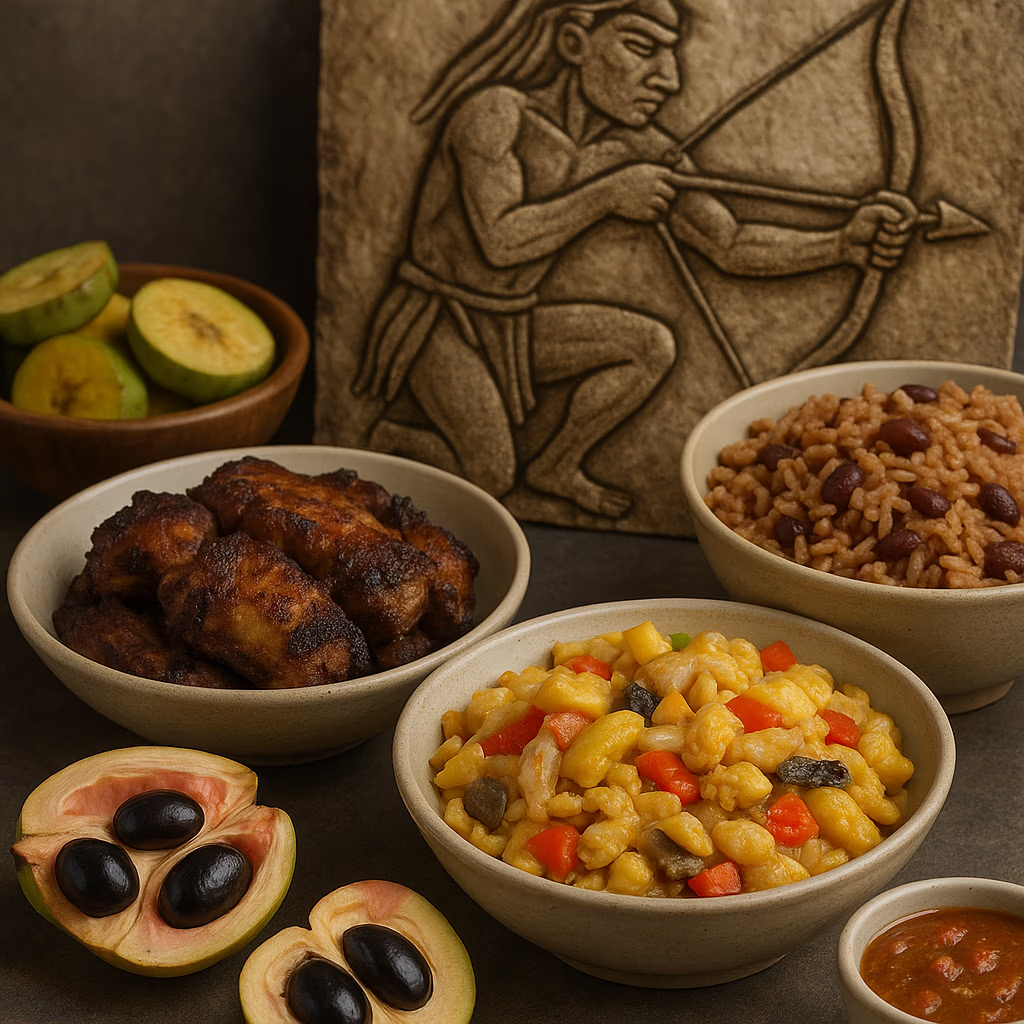
You can’t talk about Jamaican food history without honoring the strength of our African ancestors. Enslaved Africans brought with them one-pot meals, seasoning traditions, and foods like okra, yams, and callaloo. They also gave us jerk.
While the Tainos smoked meat over pimento wood, the Maroons—Africans who escaped slavery and formed their own communities—took that and made it their own. Underground pits, bold spice blends, and secrecy turned into one of Jamaica’s most iconic dishes: jerk pork. (Try my Jerk Pork Recipe here – You will love it)
To this day, I season my meat with Walkerswood Mild Jerk Seasoning Paste (get it here)—it’s my go-to. There are many ways to jerk meat, but Walkerswood is always in my pantry.
Indian and Chinese Flavors in Jamaican Food
Jamaican cooking evolved again when Indian and Chinese communities arrived post-slavery. Curries? That’s from our Indian neighbors. Chow mein and fried rice? From Chinese immigrants who brought their veggies and stir-fry skills.
Curry goat, fried rice with escallion and thyme, and a Sunday plate with both? Yep, that’s dinner at my house sometimes.
These influences made their way into everyday dishes, and now they’re staples. That’s the magic of Jamaican food—it welcomes everyone and everything, as long as it tastes good!
Jamaican Cooking in My American Kitchen
Here I am now, cooking Jamaican food in Indianapolis, raising a little girl who will be the first in our family born in the U.S. I’m the first generation to live most of my life here. And let me tell you—it’s been a journey.
Some days, I cook ackee and saltfish (coming soon to the blog!) and rice and peas from scratch. Other days, I’m putting jerk shrimp on tacos and using ghee instead of butter because of something I saw on YouTube. I play Beres Hammond while my Copper Chef pan sizzles, and in that moment, I feel like every part of my past and present is right there in the kitchen.
Jamaican Recipes That Tell Our Story
Here are some of the dishes that bring all these histories together:
- Brown Stew Chicken – My favorite Jamaican comfort food
- Jerk Pork with Gravy – smoky, spicy, and made with Walkerswood.
- Curry Shrimp – spicy, creamy, and always comforting.
- Escovitch Fish – my mothers festive Easter recipe with spicy zest
- Arroz Con Pollo – a Portuguese and Island flavor in one pot.

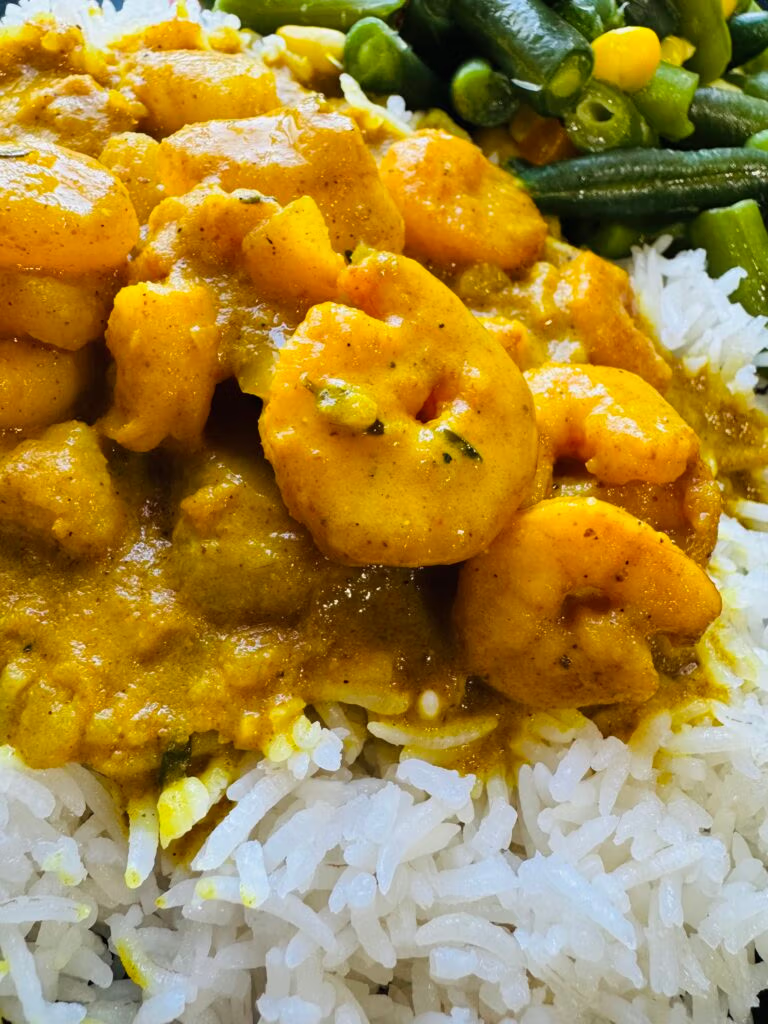

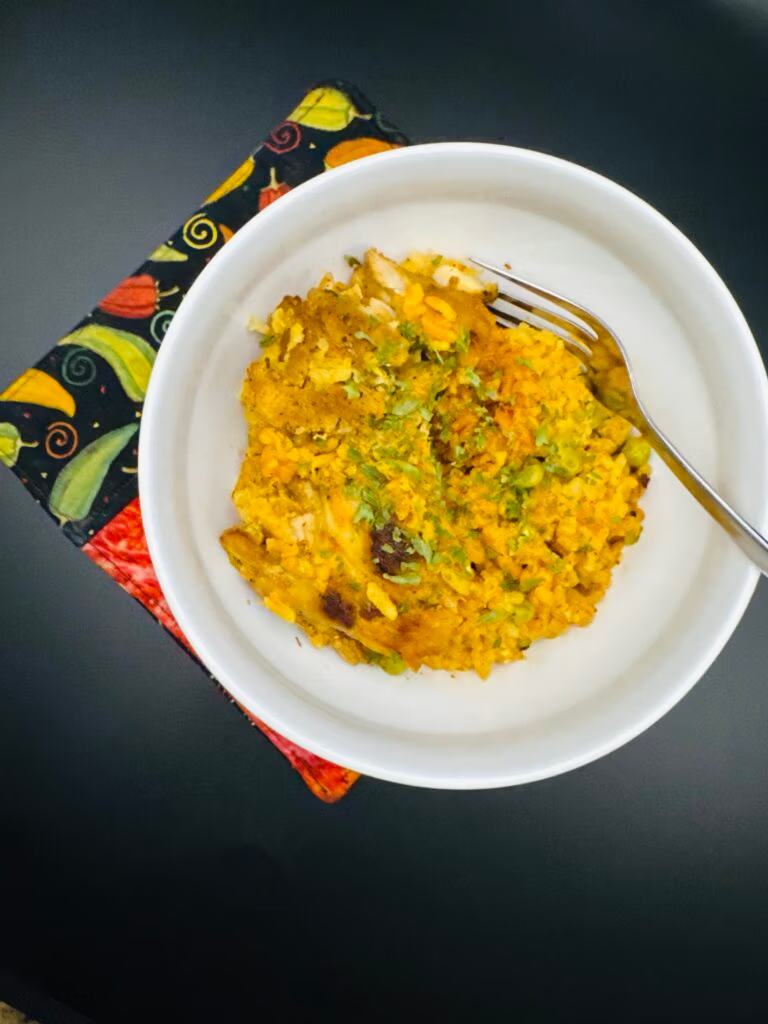
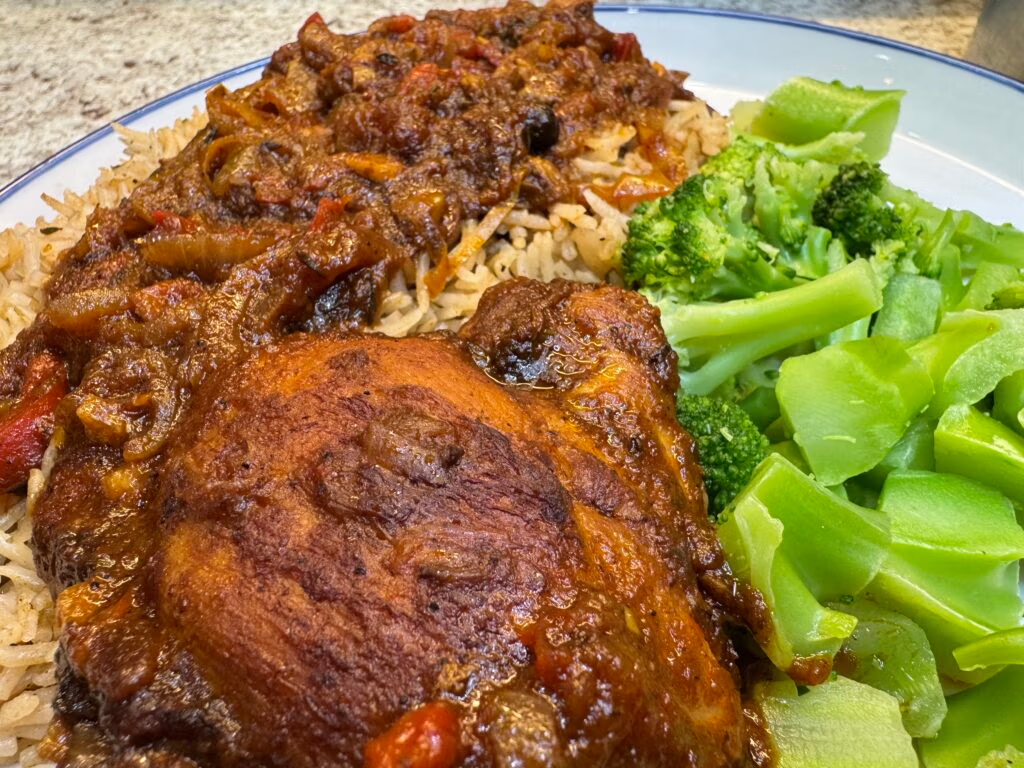
You can find even more in my growing collection of Jamaican recipes here. Bookmark it and check back often—it’s always growing.
The Rhythm of Jamaican Cooking: Music, Movement, and Love

Food isn’t just what’s on the plate—it’s the vibe in the room. When I cook, there’s music playing: old-school reggae, some Beres, maybe a little Chronixx or dancehall if I need a beat. Jamaican history is full of rhythm and flavor, and they both come alive in the kitchen.
That’s the magic of Jamaican food. It tells stories. It sings.
Let’s Stay Connected – Share the Culture
If you’re curious about Jamaican food history and cooking, if you want to try these flavors, or if you just love a good story told through spice and smoke, I’d love to share more with you.
- Subscribe here to get new recipes and stories delivered straight to your inbox.
- Buy Me a Coffee if you’d like to support more recipe testing, photography, and food history writing.
From ackee to gizzadas, from Maroons to modern fusion, thank you for letting me share my Jamaican history and cooking story.
With love and flavor,
Camille

